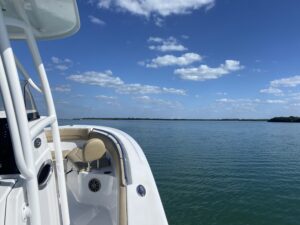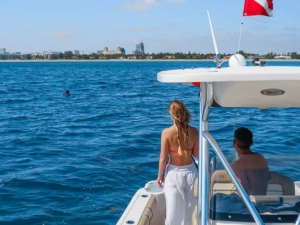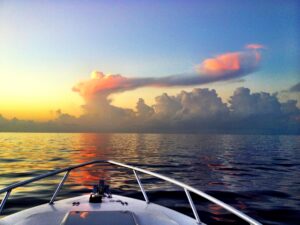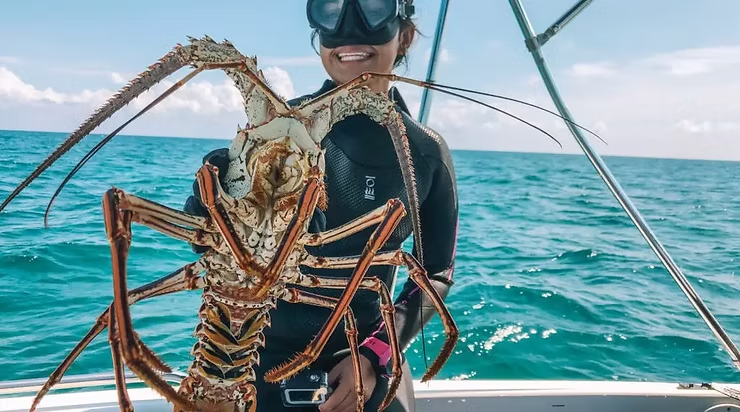
Where and When to Go for Lobster Season
When deciding where to start your lobster season, it’s important to keep some things in mind. Reef systems are great spots to start, as they provide good cover and structure for lobsters to hide under. Also, look for areas with hard bottoms such as coral or rocky rubble which also provide ideal habitat. Another important factor to consider is the water temperature – during cooler months, you can find lobster in deeper waters while they tend to stay close to shore and shallow areas during warmer periods.
Every year there are 2 different seasons when lobster catching is permitted. A long regular season and a short 2-day ‘Sports’ season.
- SPORTS SEASON – The last Wednesday and Thursday of July. In 2021, this means the dates: 28 and 29th of July. Yes, it’s short. It’s short for a reason. Thousands of people try their best to catch them in a frenzy during these two days.
- REGULAR SEASON – August 6th to March 31st is the main season. Almost 8 months of lobsters-catching bliss! This season schedule has remained the same for years, but you should check back here every year to make sure!
It’s important to follow the season regulations because from April to July they are mating and replenishing the species. Please don’t take them during the off-season. If more days were allowed, the spiny lobster species (Panulirus argus) would be depleted in a heartbeat.
What to Pack
- Gloves – When visiting Florida to do some lobster catching, you may want the extra protection of gloves. We suggest using ones specifically made for warm water areas to stay safe and comfortable during your activity.
- Measuring Gauge – With the aluminum measuring gauge, it’s easy to ensure your lobster is legal for harvesting. This essential tool can quickly confirm whether a Florida lobster meets the necessary 3-inch carapace requirement mandated by state law and must be carried in case of inspection from FFWCC. Now you’re ready to hit the water with confidence!
- See-through Mesh Bag – When venturing onto a reef, the 38″ long tail snare is ideal for catching your seafood of choice. Not only will it help you gain greater control over those deliciously elusive lobsters – this doubles as an effective tickle stick! However, if you’re not on a coral-filled terrain then don’t worry – opt instead for See-through Mesh Bag (bug bag). This quick secure closure ensures that nothing escapes and reviews speak highly of its price point too.
- Tickle Stick – To dislodge obstinate lobsters from their lairs, try using a Tickle Stick. A Tail Snare is the ideal tool to facilitate this lobster evacuation operation – so grab one before embarking on your mission!
- Diving Flag – Whether you’re swimming in the ocean, river, or inland channels—divers must follow Florida law and display a red divers-down flag with a white horizontal stripe. This essential safety item should be highly visible and constructed to last an entire season (or longer).
- Diving Light – Investing in a diving light for lobstering is essential. While it can be tempting to try and save some money on dive equipment, when safety’s at stake you know it’s worth investing in top-quality gear that will serve you well now and later if the need arises.
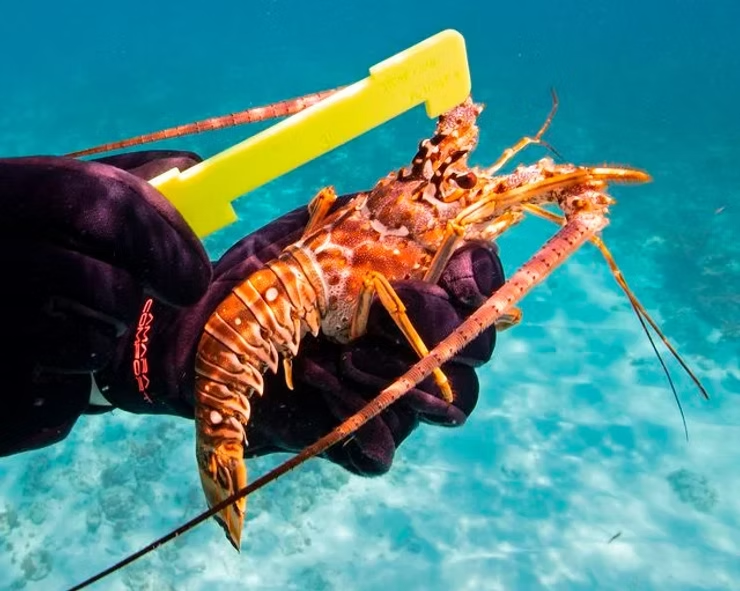
What to Know for Lobster Season in Florida
- First, get your recreational saltwater fishing license and a lobster permit (required!).
- Measure each lobster correctly, and measure while still in the water. Carapace (hard part of shell) must measure greater than three inches!
- Use the dive flag. Put it UP when diving, and take it DOWN when underway. Divers must stay within 300 feet of their dive flag (or 100 feet if in a channel).
- Six means six! Limit is 6 lobsters per person, per day, ALL day. No double-dipping trips.
- It is a felony to damage, molest or take lobster from traps in state or federal waters.
- Idle speed when within 100 yards of a boat displaying a dive flag.
- It is prohibited to touch coral, bump corals with dive fins, stand on coral and/or anchor your boat on coral.
- Lobster must be landed in whole condition. Separating the tail from the body is prohibited in state waters.
- You can’t spear a lobster or use any device that will puncture, penetrate, or crush the flesh of a lobster
- The harvest or possession of eggbearing spiny lobster, or any other egg-bearing species of lobster belonging to the families Palinuridae (spiny lobsters), Scyllaridae (slipper lobsters) or Synaxidae (furry lobsters) is prohibited.
- Be sure to check the weather forecast before heading out. This will help you avoid bad weather conditions that could put you at risk.
#fishinggear #saltwaterfishing #snorkeling #lobsterminiseason #fishingflorida #lobsterseason #Fishing #diving #FishingTips #lobster #miniseason
